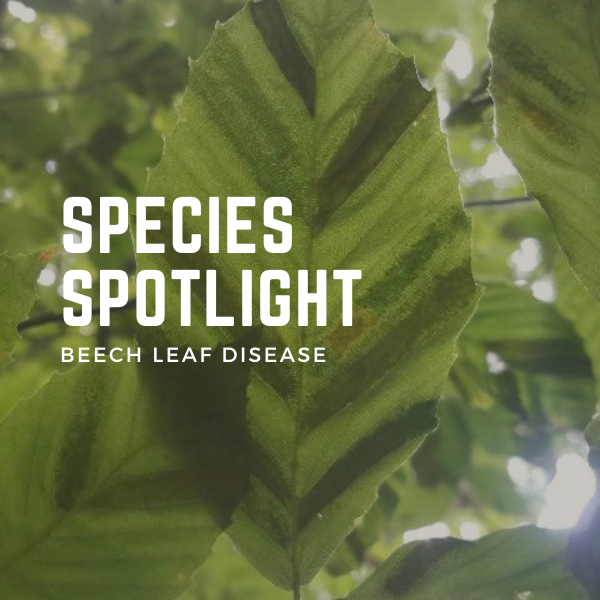This article was featured in the 2022 summer newsletter by Maria MoskaLee-NYS DEC Forest Health Specialist & Field Crew Supervisor
Beech leaf disease (BLD) is the newest threat to beech trees and is spreading rapidly across the Northeastern United States and Canada. In New York, BLD has been found in 14 new counties this year, for a total of 35 infected counties. It was recently found in Oswego County in the SLELO region, and nearby on the southwestern edge of the Adirondacks (view a BLD Distribution Map). BLD can kill a mature beech in seven years while smaller beech can be killed in as little as 2 or 3 years. All species of beech are affected.
American beech trees are an important component of the northern hardwood forest type (maple-beech-birch) which makes up more than half of the forested land in New York. Many wildlife rely on beech mast as a main source of energy. Loss of beech would cause changes in forest structure that would affect the whole ecosystem.
BLD was first observed in the U.S. in 2012 in Ohio, and there is still much unknown about the disease. BLD symptoms are caused by the nematode Litylenchus crenatae mccannii. It is unknown whether the nematode causes all of the damage, or if it is in association with another pathogen such as a bacteria, fungus, or virus. Research on possible treatments is ongoing.
New York State Department of Environmental Conservation (DEC) has been tracking BLD in New York since 2017. DEC is working with the Cornell Plant Disease Diagnostic Clinic, USDA Forest Service, surrounding states, and PRISM partners to survey for new infections, track disease progression using long-term monitoring plots, and investigate the nematode’s role in the disease.
Be on the lookout for symptoms of BLD and report sightings through iMapInvasives. For more information on iMapInvasives, visit their website at nyimapinvasives.org.
The main symptom to look for on beech foliage is darkened striping between the veins, which is best seen and photographed looking up through the canopy. Leaves with severe symptoms can be heavily banded, shrunken, browning, yellowing, and crinkled, with a thickened leathery texture.
For more information, visit DEC’s Beech Leaf Disease webpage. If you have questions about tree problems, email photos, a description, and location to foresthealth@dec.ny.gov.
SLELO PRISM is interested in collaborating with partners to coordinate a series of guided walk and talks to recruit and train volunteers to survey for BLD. If you’re interested in collaborating, please reach out to megan.pistolese@tnc.org.




